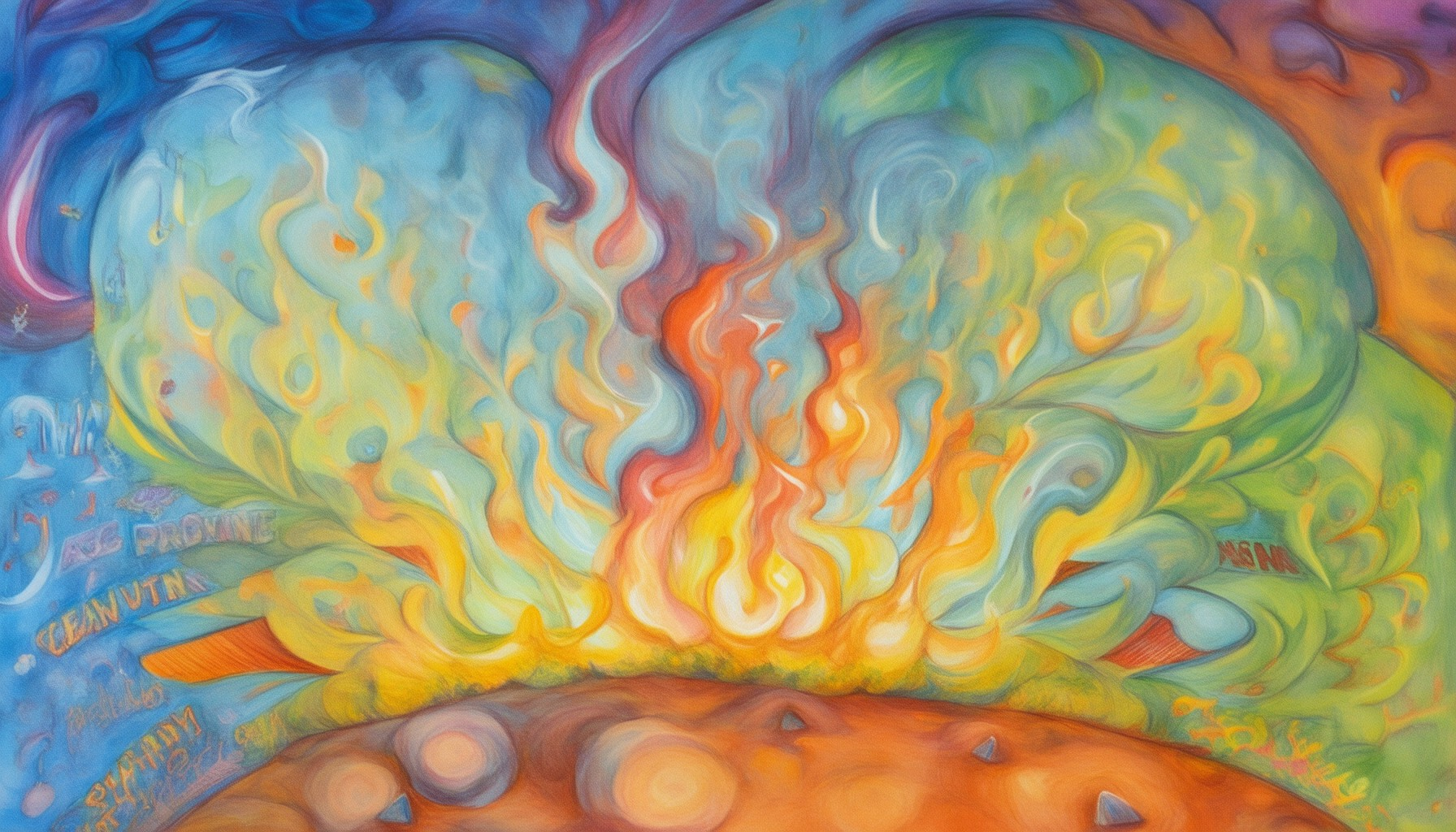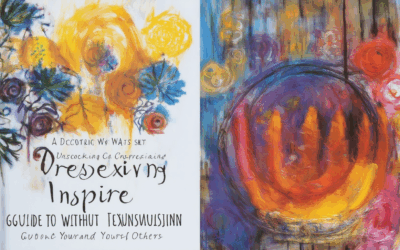In today’s fast-paced world, storytelling stands out as a powerful tool for communication and connection. Yet, amidst the rush, many struggle to tap into their creative potential, often feeling stuck or uninspired. Nurturing creativity in storytelling is essential for captivating audiences and delivering impactful messages. From harnessing the right techniques to exploring diverse perspectives, this article delves into actionable strategies that can help you unlock your creative potential and craft stories that truly resonate. Whether you’re a seasoned writer or just beginning, discovering the secrets to fostering creativity can transform your storytelling journey and open doors to innovation and deeper connections with your audience. This guide offers practical advice, real-world examples, and insights to help you embrace your creative potential and craft stories that inspire and linger long after they’re shared.
Key Takeaways
- Embrace curiosity and exploration to spark creativity.
- Practice mindfulness for clearer thinking and more authentic stories.
- Collaborate with others to gain new insights and innovative ideas.
- Experiment with new techniques to push creative limits.
- Stay consistent and patient to grow your storytelling skills.
- Adopt a growth mindset to view challenges as learning opportunities.
- Use mindfulness to enhance creativity and clarity.
- Write from diverse perspectives to create deeper, relatable stories.
- Collaborate to uncover new creative possibilities.
- Study successful stories to refine your craft.
- Experiment with new formats to expand creative expression.
- Seek feedback to improve and evolve your storytelling.
- Stay curious and open-minded to create standout stories.
- Make dedicated time for creativity to build momentum.
- Analyze feedback to strengthen your storytelling.

Fostering Creativity in Storytelling
Nurturing creativity in storytelling involves a combination of mindset, technique, and environment. Here are some effective strategies to unlock your creative potential:
- Embrace Curiosity and Exploration
- Prioritize Passion Over Perfection
- Journaling and Documentation
- Collaborative Creation
- Immerse Yourself in New Experiences
- Practice Mindfulness and Reflection
- Study Great Stories
- Set Regular Creative Goals
- Seek Feedback and Iterate
Curiosity is the seed of creativity. Ask questions, explore unfamiliar subjects, and engage in experiences that stimulate your senses. By broadening your perspective, you open yourself up to new storytelling ideas and approaches.
Creativity thrives in a non-judgmental space. Allow yourself to experiment freely without worrying about perfection. Embrace failures as learning opportunities and trust the creative process, even if the outcomes don’t immediately meet your expectations.
Writing down your thoughts and observations can be a powerful tool for generating stories. Keep a journal to document daily experiences, ideas, and inspirations. Review these entries periodically to discover patterns and themes that can fuel your storytelling.
Working with others can spark new ideas and perspectives. Collaborate with friends, colleagues, or online communities to brainstorm story concepts. The diverse viewpoints can lead to innovative and richer narratives.
Travel, attend workshops, and engage in activities that expose you to different cultures, traditions, and ways of thinking. These experiences can inspire fresh storytelling angles and deepen your understanding of human nature.
Mindfulness helps clear mental clutter and allows for clearer creative expression. Dedicate time to meditate or reflect on your day before diving into storytelling tasks. This can enhance your ability to connect with your material more deeply.
Analyzing successful stories can provide valuable insights into structure, character development, and theme execution. Study works from various genres and cultures to expand your creative toolkit and find inspiration.
Establish a routine for creating stories, whether it’s daily writing sessions or monthly projects. Consistency helps build momentum and keeps your creative muscles active, making it easier to generate ideas over time.
Share your work with trusted peers or mentors to gain constructive feedback. Use their insights to refine your storytelling approach and identify areas for growth. Iteration is key to improving and evolving your craft.
By implementing these strategies, you can unlock your creativity and develop compelling stories that resonate with your audience. Remember, the journey of storytelling is as important as the destination itself.
What Strategies Help Nurture Creativity in Storytelling?
Storytelling is an art form that thrives on creativity, requiring writers, speakers, and creators to consistently produce compelling narratives. To nurture creativity in storytelling, it’s essential to adopt strategies that fuel imagination and innovation. Below are proven approaches to unlock your creative potential and craft stories that resonate deeply with your audience:
- Embrace Curiosity and Exploration: One of the most effective ways to nurture creativity is by fostering curiosity. Explore diverse perspectives, cultures, and experiences to broaden your horizons. This exposure often sparks unique ideas and fresh viewpoints, enriching your storytelling palette. Visit Patrick Mettraux to discover inspiration through personal narratives and artistic reflections.
- Prioritize Mindfulness and Reflection: Creativity thrives in a calm and focused mind. Practice mindfulness techniques, such as meditation or deep breathing exercises, to clear mental clutter. Reflect on past experiences and emotions to infuse authenticity into your stories. This introspective approach often leads to more meaningful and relatable narratives.
- Collaborate and Engage with Others: Collaboration can be a powerful catalyst for creativity. Work with fellow creatives, writers, or editors to brainstorm ideas and gain new insights. Engaging with diverse perspectives can lead to innovative story structures and themes. Check out The Write Practice for collaborative writing exercises and tips.
- Experiment with New Techniques and Perspectives: Don’t shy away from trying unconventional methods. Whether it’s incorporating nonlinear storytelling or exploring experimental writing styles, pushing boundaries can reignite your creativity. Websites like Writerly offer resources and communities to inspire creative exploration.
- Stay Consistent and Patient: Creativity is a muscle that grows with practice. Maintain a consistent routine, even if the initial outputs aren’t groundbreaking. Over time, your storytelling skills will evolve, leading to more polished and impactful work. Remember, every great story begins with a simple idea that is nurtured over time.

What Are the Best Ways to Encourage Creativity in Storytelling?
The ability to tell a compelling story is a skill that can be cultivated through deliberate practice and mindset shifts. Here are some effective strategies to enhance creativity in storytelling:
- Embrace Curiosity and Exploration: Approach storytelling with an open mind. Explore new experiences, cultures, and perspectives to fuel your creativity. Ask questions and seek to understand the world around you differently.
- Practice Mindfulness and Reflection: Before diving into a new project, take time to reflect on past experiences and lessons learned. This introspection often sparks fresh ideas and innovative storytelling approaches.
- Engage in Collaborative Environments: Collaboration can inspire new ways of thinking. Work with others who have diverse backgrounds and perspectives to gain unique insights and creative angles for your stories.
- Utilize Writing Exercises: Dedicate time to daily writing exercises. These can help overcome writer’s block and train your brain to think creatively. Try freewriting or stream-of-consciousness techniques to unlock new ideas.
- Explore Diverse Perspectives: Read widely and engage with stories from different cultures and genres. Exposure to varied viewpoints can expand your understanding of human experience and enrich your own storytelling.
- Create a Dedicated Creative Space: Establish a specific area where you can focus on your creative projects. This physical environment can help signal to your brain that it’s time to think creatively and produce original work.
- Seek Inspiration from Various Sources: Draw motivation from art, music, nature, and everyday life. Keep a journal or digital note-taking app to record observations and ideas that may spark future stories.
- Share and Receive Feedback: Present your work to peers or writing groups for constructive criticism. This process can reveal blind spots and open doors to new creative possibilities.
- Reflect on Past Work: Regularly review your previous stories to identify patterns, strengths, and areas for growth. This self-reflection can help you develop unique styles and approaches that set your storytelling apart.
By incorporating these strategies into your routine, you can unlock new levels of creativity and produce stories that resonate deeply with your audience. Visit Patrick Mettraux for more resources and insights on fostering creativity in storytelling.

What Strategies Help Nurture Creativity in Storytelling?
Storytelling is an art form that thrives on creativity, requiring writers, speakers, and creators to consistently produce compelling narratives. To nurture creativity in storytelling, it’s essential to adopt strategies that fuel imagination and innovation. Below are proven approaches to unlock your creative potential and craft stories that resonate deeply with your audience:
- Embrace Curiosity and Exploration: One of the most effective ways to nurture creativity is by fostering curiosity. Explore diverse perspectives, cultures, and experiences to broaden your horizons. This exposure often sparks unique ideas and fresh viewpoints, enriching your storytelling palette. Visit Patrick Mettraux to discover inspiration through personal narratives and artistic reflections.
- Prioritize Mindfulness and Reflection: Creativity thrives in a calm and focused mind. Practice mindfulness techniques, such as meditation or deep breathing exercises, to clear mental clutter. Reflect on past experiences and emotions to infuse authenticity into your stories. This introspective approach often leads to more meaningful and relatable narratives.
- Collaborate and Engage with Others: Collaboration can be a powerful catalyst for creativity. Work with fellow creatives, writers, or editors to brainstorm ideas and gain new insights. Engaging with diverse perspectives can lead to innovative story structures and themes. Check out The Write Practice for collaborative writing exercises and tips.
- Experiment with New Techniques and Perspectives: Don’t shy away from trying unconventional methods. Whether it’s incorporating nonlinear storytelling or exploring experimental writing styles, pushing boundaries can reignite your creativity. Websites like Writerly offer resources and communities to inspire creative exploration.
- Stay Consistent and Patient: Creativity is a muscle that grows with practice. Maintain a consistent routine, even if the initial outputs aren’t groundbreaking. Over time, your storytelling skills will evolve, leading to more polished and impactful work. Remember, every great story begins with a simple idea that is nurtured over time.
Nurturing Creativity in Storytelling: Proven Methods for Success
Storytelling is an art form that thrives on creativity, and fostering this ability can lead to remarkable outcomes. Here are some effective methods to nurture creativity in storytelling:
- Embrace a Growth Mindset : View challenges as opportunities for learning and evolution. Celebrate failures as stepping stones rather than setbacks.
- Engage in Mindfulness Practices : Techniques like meditation or deep breathing can help clear mental clutter, allowing ideas to surface more easily.
- Experiment with Multiple Perspectives : Try writing from different characters’ viewpoints or exploring unconventional story structures to spark innovation.
- Collaborate with Others : Working with diverse groups can expose you to new ideas and perspectives, enriching your storytelling approach.
- Use Writing Prompts : Create prompts that challenge you to think creatively, such as “Write about a world where…” or “Describe a character through an object.”
- Visualize Your Stories : Spend time visualizing scenes or characters before writing, which can enhance your ability to bring stories to life vividly.
- Seek Inspiration from Diverse Sources : Read widely, watch films, and listen to podcasts to absorb different storytelling styles and approaches.
- Set Aside Dedicated Time : Regularly allocate periods for creative work, free from distractions, to build momentum and consistency.
- Reflect on Feedback Constructively : Analyze critiques to identify strengths and areas for growth, using this insight to refine your storytelling techniques.
By incorporating these methods into your routine, you can unlock new dimensions of creativity and elevate your storytelling abilities. Remember, creativity is a muscle that benefits from exercise and cultivation. With persistence and practice, your storytelling will continue to evolve and thrive.

Effective Techniques to Nurture Creativity in Storytelling
Storytelling is an art form that thrives on creativity, imagination, and emotional resonance. To nurture creativity in storytelling, it’s essential to adopt techniques that unlock your potential and inspire meaningful connections with your audience. Here are some proven strategies:
- Embrace a Growth Mindset: View challenges as opportunities for learning and innovation. A growth mindset fosters resilience and encourages experimentation, which are crucial for storytelling success.
- Practice Regular Writing Exercises: Dedicate time to daily writing exercises, such as free-writing or stream-of-consciousness style, to warm up your creative muscles and spark ideas.
- Explore Multiple Perspectives: Consider diverse viewpoints and cultures to enrich your narrative depth. This approach broadens your creative palette and makes your stories more relatable to a wider audience.
- Engage in Collaborative Storytelling: Partner with others to share ideas and gain fresh insights. Collaborative efforts can lead to unique and innovative story concepts.
- Study Successful Stories: Analyze award-winning films, novels, and podcasts to identify patterns and techniques that resonate with audiences. Learn from masters of storytelling to refine your craft.
- Experiment with New Formats: Try different storytelling formats like graphic novels, audio dramas, or interactive media to push creative boundaries and discover what works best for your vision.
- Seek Feedback and Iterate: Share your work with trusted peers or mentors who can provide constructive feedback. Use their insights to refine and enhance your storytelling techniques.
- Stay Curious and Open-Minded: Keep exploring new ideas, experiences, and industries. A curious mind is more likely to produce groundbreaking stories that stand out.
By implementing these techniques, you can unlock your creativity and craft stories that captivate and inspire. Remember, storytelling is a journey, and every great story begins with a spark of inspiration.
For more insights into nurturing creativity, explore Patrick Mettraux’s blog , where he delves into the art of storytelling and offers practical tips for creators.
Additionally, check out these resources for further exploration:
- The Write Practice : A valuable resource for mastering storytelling techniques
- Writerly : Expert guides on storytelling and creativity





0 Comments